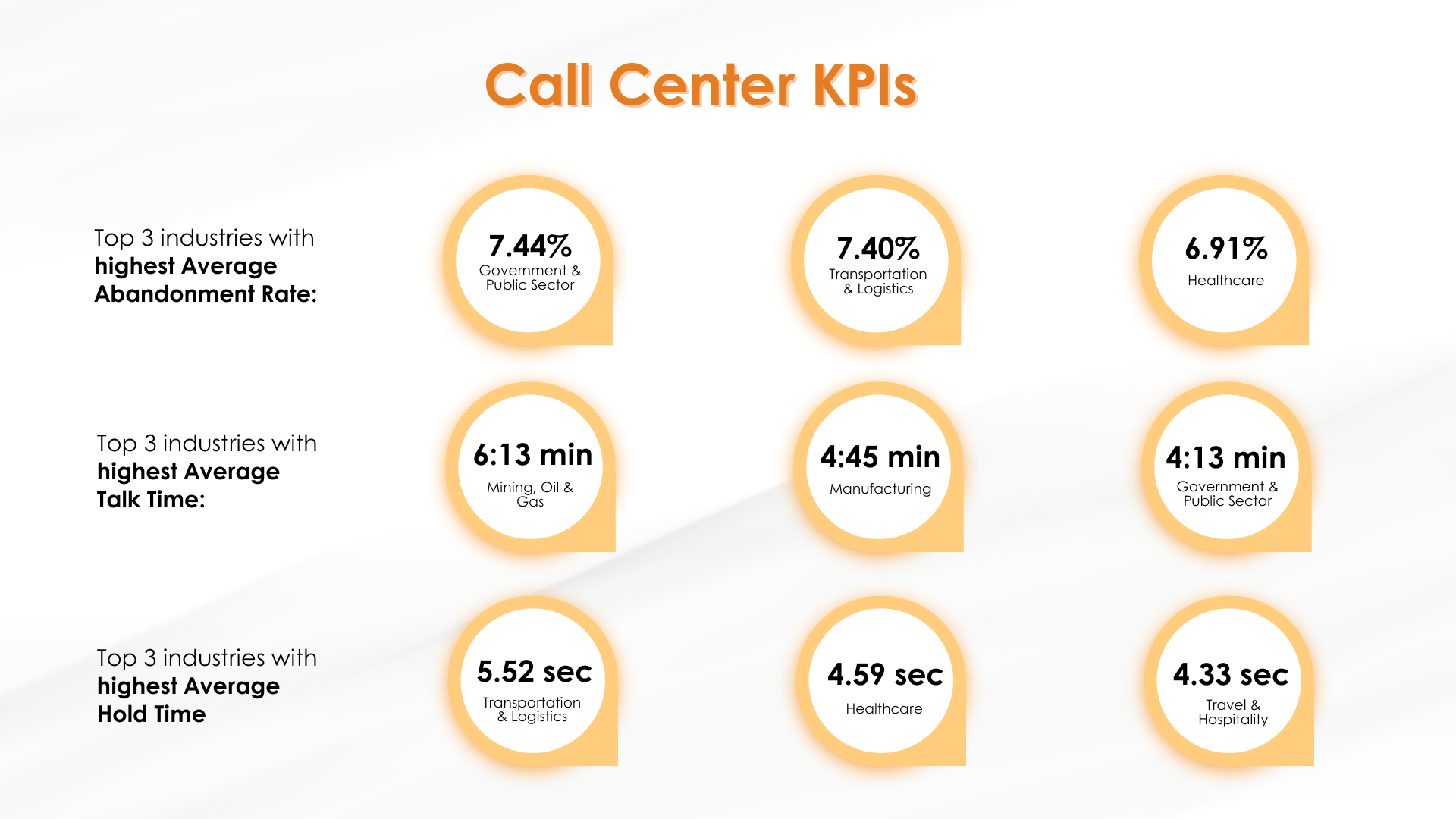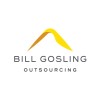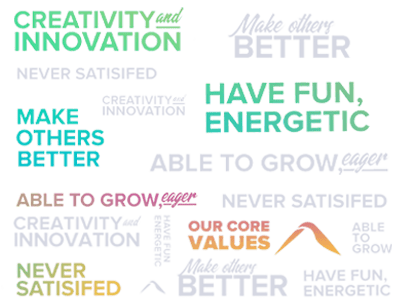TL;DR: Besides handling customer complaints, customer service builds long-term relationships and transforms first-time users into loyal customers. Call centers can make informed decisions that boost revenue when supported by such tools. There are call center customer requirements to cater to get the essential CX. In this blog, we focus on the seven most crucial Customer Experience KPIs for call centers, which can guide them and aid them in better managing customers for excellent CX.
Why Do Call Centers Need Customer Experience KPIs?

Source: Aimultiple
Modern call centers must work on the speed, quality, and efficiency of the calls. It becomes immensely stressful to remain consistent in maintaining the above requirements. The customer experience KPIs for call centers came into the picture to balance between calls and customers. Read in the following sentences why large call centers must track the KPIs.
Better Performance than Earlier:
Customer interaction highly impacts call center productivity and questions the call quality. Good customer service is fast and efficient. Traditional customer service often goes undocumented. Modern call centers must track each call to investigate the bigger picture. Large-scale operations navigate customer interactions from straightforward queries to convoluted issues. Using KPIs can improve the customer experience with proactive solutions supported by insights.
Well-maintained Operations:
Call center inefficiency costs more than the money-brand reputation. Call centers need the right solutions to tackle everyday issues. The Customer Experience KPIs for Call Centers reveal inefficiencies such as short staffing or delays in achieving the target workflow. It could be a minute error, but it can cost them customer goodwill and status in the market.
Data-driven Strategies:
Decision-making can be complex for every call center. Blending new technologies with call center strategies will give the intended results. When customer services get backing from these KPIs, it strengthens accountability and creates confidence among stake-holding clients.
Focus on Agent’s well-being:
The agents must shift between solving customer issues and tackling their well-being. They can perform well only when we take care of their overall health. There are many reasons for the mental breakdown, ranging from long shifts to downsizing. The call center KPIs identify where agents excel and where they need improvement and training.
Revenue Growth:
When call centers work on their holistic approach, they can achieve their targets before the estimated time. A well-run organization automatically generates profit and achieves its goals. The KPIs identify the call center’s data-driven insights to drive productivity and improve the agent’s performance.
Top 7 Customer Experience KPIs for Call Center
Here are the most used Customer Experience KPIs for the Call Center. These metrics support customer service in handling calls and evaluate customer feedback to assess the agent’s performance. The call center productivity directly influences CX.

Customer Satisfaction Score (CSAT)
It measures the level of satisfaction a customer has with the service. One may ask to rate the product/ service on a scale of 1-10, often after every interaction. One can ask the customers to fill out the survey. There are criteria like satisfied, neutral, and unsatisfied on the scale.
Did you know? NEQQO deployments have resulted in a 20% increase in Customer Satisfaction (CSAT) scores.
Net Promoter Score (NPS):
This KPI reveals how strongly a customer feels about the service and function as a loyal customer. The scaling meter asks, “How would you recommend the service to your friend/colleague.” The ratings range from 1-10
Did you know? Deploying NEQQO resulted in an increase of 20% in NPS scores.
First Contact Resolution (FCR):
It measures the number of customer issues solved in the first call. It is a moment of magic when the customer gets relief when the problem gets solved without any follow or growth. Solving the issue in the first call will save the customer frustration from making multiple calls, making them happier.
To improve the FCR rate, employee training, up-to-date customer service software, and a customer service culture that values quality and speed are essential; Quality Monitoring solutions like NEQQO can be utilized to achieve this. They can provide you with AI-powered customer interaction analysis tools to help you identify problems with agent training programs and incentive structures. Their experienced traditional QA experts can also be helpful in providing valuable feedback on customer service interactions, and the deployed customer service software. Neqqo, NEQQO advanced QA management platform, can be used to provide you with real-time alerts (when customer service issues occur), analytics, and reporting tools to identify areas that require improvement and track customer service interactions. In short, with advanced Quality Monitoring solutions, you will be able to quickly identify any issues and improve the FCR.
Did you know? The implementation of NEQQO resulted in a 40% reduction in QA expenses due to automation.
Average Handle Time (AHT):
AHT indicates that a customer service agent takes to complete the conversation. It evaluates the agent’s performance and identifies who needs more training.
By utilizing training, tracking and monitoring, automation, data analysis, and streamlining processes, AHT (Average Handle Time) can be reduced. Training CSRs (Customer Service Representatives) in customer service, product knowledge, and problem-solving skills can help resolve queries quickly and efficiently. Utilizing a system to track and monitor agent performance allows for quick identification and resolution of issues; NEQQO’s analytics software and the Neqqo platform are perfect for that.
Did you know? Through non-talk time analysis, NEQQO deployment resulted in a 25% reduction in call handle time.
Abandonment Rate:
It shows the number of customers disconnecting the call before it reaches the designated agent. When the caller abandons the call, it is more than a missed call. The number of times they hang up a call represents utter distrust of the service.
To reduce the call abandonment rate, providing customers with quick answers, training customer service reps, providing self-service options, having an effective call routing system, and monitoring customer feedback are some steps one can take. Self-service options can cut down wait times, and well-trained reps can quickly give helpful answers. An efficient call-routing system can direct calls to the appropriate representative or department in a timely manner, and monitoring client feedback can help identify areas for improvement. These steps are crucial in minimizing the call
An effective call-routing system should route calls to the right person or department quickly, while tracking customer feedback can help determine areas to improve. All of these steps are essential in reducing the call abandonment rate, and advanced Quality Monitoring solutions can help with all of that, especially in training CSRs and tracking customer feedback.
First Response Time (FRT)
It is like the number of calls that face a busy sign or possible issues handling the call. Imagine reaching out to customer care, and the first response you get is a warm welcome. It is what one expects, and FRT aims to deliver it.
Percentage of Calls Blocked:
This shows customers end up on the call before reaching the designated agent. When the collar leaves the call, it is more than a missed call.For example, if one calls to resolve their issue but gets a recorded message that the line is busy. It becomes too frustrating for the caller. Therefore, the call block matters.
Conclusion: Quality Monitoring Is the Key to KPI Success
Quality Monitoring solutions are a must on any call center that wants to improve its customer experience KPIs. More accurate customer feedback can also be used to implement more enhancements and improvements through data collection and analysis with the help of these solutions. Quality monitoring solutions have the added benefit of training employees in customer service best practices and validating that customer service standards are being met as designed. Quality Monitoring solution helps call centers to achieve the customer experience KPIs at an optimum level.
Learn more – Unveiling Excellence – Elevating Retail Center Quality Beyond Metrics




